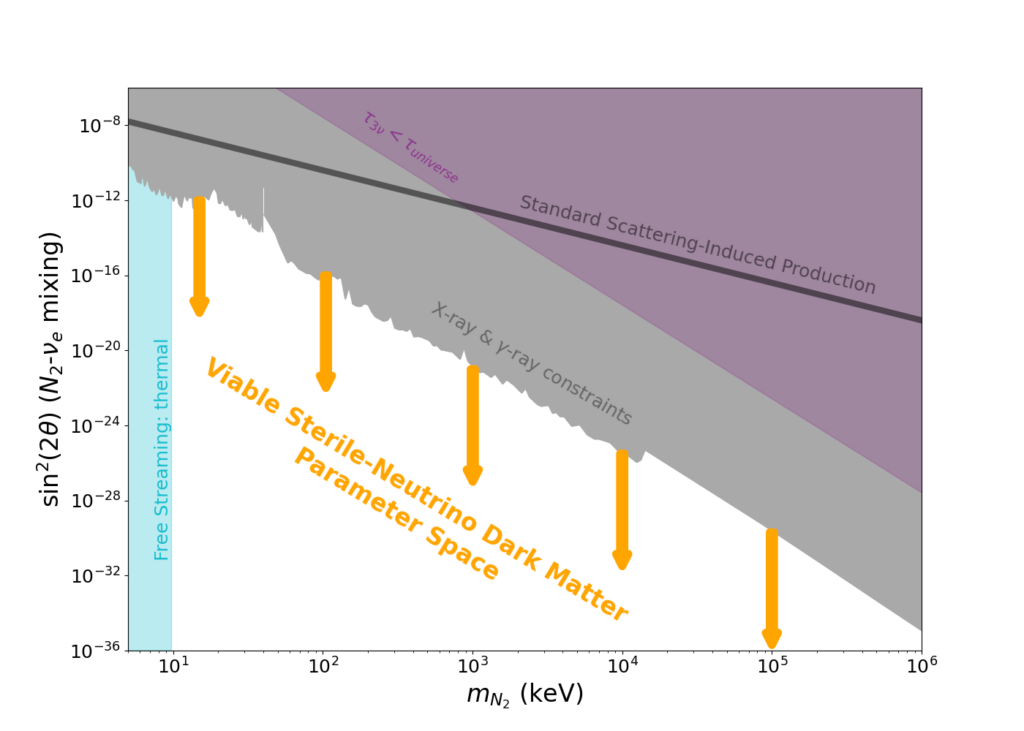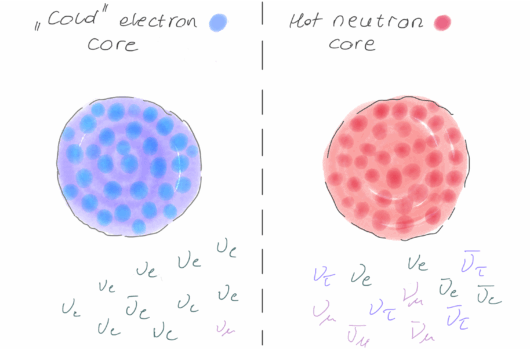Sterile Neutrino Dark Matter Gets Even Cooler
Prepared by Lukas Graf
We don’t yet know what makes up dark matter, but we do know that it doesn’t belong to the familiar particles of the Standard Model. One promising class of very well motivated dark matter candidates are dark neutral leptons, or “sterile neutrinos”.
In typical scenarios, there are two main challenges to sterile neutrinos as dark matter. First, they are relatively light, which means they may move fast enough to suppress the formation of smaller-scale structures in the Universe — something that could conflict with observations. Second, they may not be “dark” enough. In the standard scenario, sterile neutrinos are produced because ordinary neutrinos (active neutrinos) are mixtures of mass states, with a tiny fraction (one part in 100 billion) of their mass coming from a heavier, mostly sterile state. This small component allows active neutrinos to scatter and form sterile neutrinos, which could make up the dark matter if the sterile neutrino mass is around the keV scale. However, this same small admixture also opens up a decay channel where a sterile neutrino transforms into an active neutrino and emits a photon—specifically, an X-ray. X-ray telescopes have imposed stringent limits on this scenario.
We can bypass these problems by introducing more complexity to the sterile neutrino sector. In our mechanism, we propose that active neutrino scattering creates a population of very heavy (~1 MeV to ~10 GeV) sterile neutrinos, called N1. Although N1 isn’t dark matter (it decays quickly), some of its population could transfer, through decay or mixing, to lighter but still heavy sterile neutrinos (~10 keV to ~1 GeV), called N2, which would form the dark matter. These N2 particles could be part of a dark sector and need not have any mixing with active neutrinos. Without mixing, they avoid the X-ray constraints, though tiny mixings might still allow high-energy X-rays or gamma rays to be detected by future telescopes. The first challenge, related to structure formation, is solved by the larger mass of N2 and by the colder production spectrum resulting from the transfer of population from the gateway sterile neutrinos to N2.
In the end, although we still know little about neutrinos, upcoming particle-physics experiments as well as astrophysical surveys may shed light on these elusive and mysterious Standard-Model particles, and potentially, reveal a related rich dark sector, unravelling the nature and origin of dark matter. Clearly, such a discovery would have profound implications for particle physics, astrophysics, and cosmology.

Header image credit: X-ray: NASA/CXC/CfA/M.Markevitch et al.; Optical: NASA/STScI; Magellan/U.Arizona/D.Clowe et al.; Lensing Map: NASA/STScI; ESO WFI; Magellan/U.Arizona/D.Clowe et al.
Read More:



